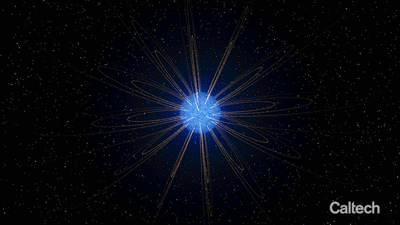A two-faced white dwarf

In July 2023, a manuscript led by Ilaria Caiazzo from Caltech and including members of the BUWD group was published in Nature announcing the discovery of an enigmatic new star: a white dwarf that is entirely composed of hydrogen on one side and helium on the other. Every 15 minutes the star rotates once on its axis, showing both its hydrogen and helium faces; we nicknamed the star “Janus” after Roman mythology. We believe the chemical stratification is likely related to a small magnetic field and a very thin layer of hydrogen on the star, but it remains a relatively unsolved problem. The discovery was published in the July 19 2023 issue of Nature and included press coverage from Sky & Telescope, The Guardian, and Space.com.